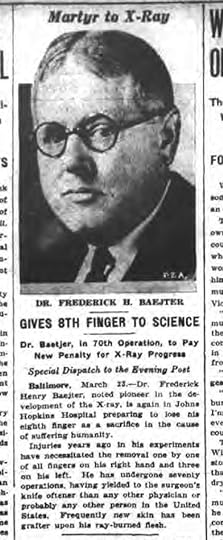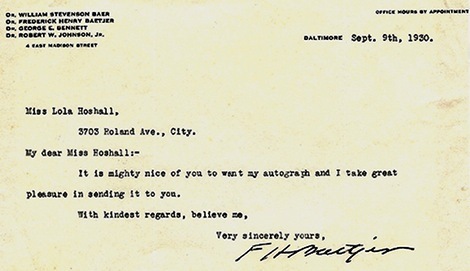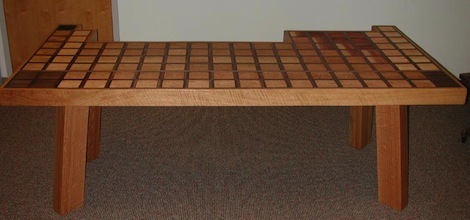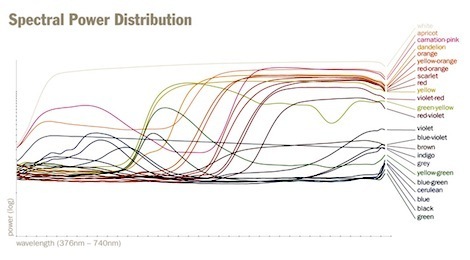Marc Abrahams's Blog, page 583
March 30, 2012
Reflections on Sociology as a science (*)
John Levi Martin [pictured here], sociologist at the University of Chicago offers his "Reflections on Sociology as a science":
I am often asked to give my opinion as to whether and how sociology should be a science, provoking the following reflections on science as an enterprise. Basically, I have to say that science has let me down. At first I was very enthusiastic about it – I liked the shiny surfaces and the big dials and that thing that looks like a tee-vee antenna but sends the electric arcs up and helps wake up Frankenstein. So I was willing to overlook science's mis-steps, like the drum machine, the tamagochi, and the hydrogen bomb….
Some of my colleagues argue that statistics are a part of science for which we should be grateful. But the part of statistics that has served us best is the asterisk, and I find that science's role here has been distinctly tangential.
The asterisk, we are told, was a printer's invention to succinctly indicate the year of birth of a personage. The most common explanation is that it represents the "star" (Latin, "asterix") under which a person was born; an alternate derivation is that it represents the butthole (Latin, "asterix")… Sociologists adopted it to indicate statistical significance because it is like a little firework of joy: *. Ka-boom! Another publication!
In contrast, the symbol for almost-significant-but-not-quite is the ‡ which represents the dagger carried by every Roman senator (also, confusingly, called the "asterix") that he would stab into his own heart if he turned out to be in a play by Shakespeare that had to come to a quick end because King John had to run to the bathroom… Science may indeed have invented statistical significance, as my colleagues assure me it did, and I do admit that this was a gift to sociology. But then it also invented marginal statistical significance, and that cancels out the other. Add the hydrogen bomb and you see where I am coming from.
(HT Vaughn Tan)

March 29, 2012
Hair Pulling: Cured by a Motor Cycle Helmet
This week's Novel Cure of the Week is described in a study published in 1979:
"Nursing care study. Hair Pulling: Cured by a Motor Cycle Helmet," A. May, Nursing Mirror, 1979 Jun 7;148(23):37-8.
We do not have access to that journal, and would likely enjoy seeing a copy of the article.
The photo below shows a motorcycle helmet from that era; it may not be the same model that was used in the study.

The vicar's fall from grace (onto a potato)
The British edition of The Metro reports (in an article derived from reporting by The Sun:
Vicar hospitalised with potato up his bum
A vicar claims a potato got stuck up his bottom after he fell on to the vegetable while hanging curtains in the nude.
The clergyman, in his 50s, told medical staff at Sheffield's Northern General Hospital [pictured here] that the accident was definitely not due to a sex game….
A&E nurse Trudi Watson said: 'He explained to me, quite sincerely, he had been hanging curtains naked in he kitchen when he fell backwards on to the kitchen table and on to a potato. But it's not for me to question his story.'
(HT Ed Yong)
BONUS: Stress Test for Vicars
BONUS: The rectum of the Bishop of Durham, preserved in a museum.
BONUS: The Ig Nobel Prize-winning study about objects found in people's rectums

He gave them the finger(s): A "Martyr to X-ray"
The March 25, 1925 issue of the New York Evening Post features this article about Dr. Frederick H. Baetjer, who gave his finger — actually eight of his fingers — to science:
(Thanks to investigator Earle Spamer for bringing this to our attention.)
BONUS: A few years later someone requested his autograph, prompting this letter from the good, nearly fingerless doctor:

March 28, 2012
Prof. Nishiyama – #4 – the math(s) of light switches.
 For anyone who is not an electrician, the task of wiring-up a pair of interacting two-way light switches (say, for example at the top and bottom of a stairway) might seem decidedly non-trivial. Experienced electricians though may scoff at the perceived simplicity of this assignment – but what if the house had say, five floors, and needed an interconnected switch on each floor. Still too easy? Then how about an 'unlimited' number of floors? That's when you'd need the assistance of someone versed in Boolean Mathematics. Like for example Professor Nishiyama of the Osaka University of Economics, Japan. The professor has written a paper for Osaka Kiedai Ronshu (vol. 59, #1) on just this very subject. Stairway Light Switches
For anyone who is not an electrician, the task of wiring-up a pair of interacting two-way light switches (say, for example at the top and bottom of a stairway) might seem decidedly non-trivial. Experienced electricians though may scoff at the perceived simplicity of this assignment – but what if the house had say, five floors, and needed an interconnected switch on each floor. Still too easy? Then how about an 'unlimited' number of floors? That's when you'd need the assistance of someone versed in Boolean Mathematics. Like for example Professor Nishiyama of the Osaka University of Economics, Japan. The professor has written a paper for Osaka Kiedai Ronshu (vol. 59, #1) on just this very subject. Stairway Light Switches
Using a combination of truth tables, Venn diagrams, and Boolean algebra the professor shows (by way of a matrix which uses only simple three-way and four-way switches see note) that a circuit can be devised which can turn that lights on and off in a house with an infinite number of stories.
 Note: Confusion sometimes arises over the differences in electrical switch terminology – 'ways', 'poles' and 'throws' – this paper is an example.
Note: Confusion sometimes arises over the differences in electrical switch terminology – 'ways', 'poles' and 'throws' – this paper is an example.
Also see: Previous Improbable notes regarding professor Nishiyama : Here, Here, and Here
Coming soon: More research from professor Nishiyama .

Periodic Table vs. … vs. Periodical table
You are familiar with the periodic table.

You may be familiar with the periodic table table, invented by Theo Gray. The top of this four-legged table is itself a periodic table of the elements. The invention led to Theo being awarded the 2002 Ig Nobel Prize in chemistry (and indirectly led to other things, including his becoming a columnist for Popular Science magazine).
You are less likely to be familiar with the periodical table table. A company called Levenger offers it for sale. The periodical table table is a storage and display receptacle for magazines and other periodical publications. (Thanks to investigator Thomas Michel for bringing it to our attention.)

March 27, 2012
Tonight in Odense: Finale of the Ig Nobel Scandinavia Tour
Tonight's the final show in the 2012 Ig Nobel Tour of Scandinavia.
It's in Odense at the University of Southern Denmark, in room U45, from 19.00-21.00. There are just a few tickets left. TICKETS are available online.
The photo below, by Andrea Rapisarda, below shows part of the audience at last night's show at the University of Aarhus.
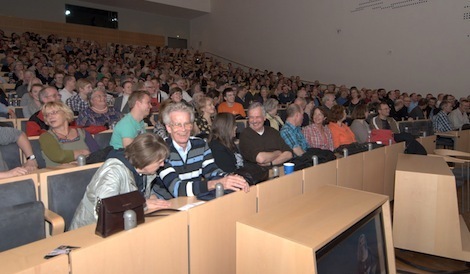
Tonight's show will feature:
Marc Abr ahams , Improbable Research editor and founder of the Ig Nobel Prize ceremony
Andrea Rapisarda and Alessandro Pluchino : Ig Nobel Prize winner (Organizations would be more efficient if they promoted people at random)
Peter Kristensen :Alcohol intoxication through the feet
Sofia Dahl : Vocal pitch height and aggression
Harald Moi : Ig Nobel Prize winner (Transmission of gonorrhea through an inflatable doll)

Prof. Nishiyama – #3 – Finger Counting
Everyone (who can count) will instantly recognise the numbers 1 2 & 3 in the picture below: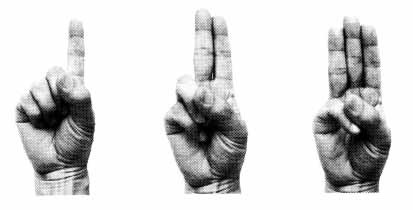
Or will they? Well, no they won't.
All is explained in an article for Osaka Keidai Ronshu, Vol. 60 number 5, where Professor Yutaka Nishiyama (Osaka University of Economics, Japan) lists many crucial variations in finger-counting across the world.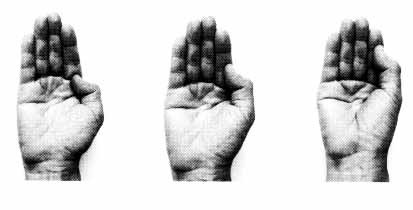
These hands, for example, also show the numbers 1, 2 &3 – as will be readily appreciated by those from India, Pakistan and Bangladesh. The professor has discovered (via the internet) that there are at least 27 types of finger-counting regimes across the world. But how could so many variations come about? The professor gives examples – Europe for instance :
"Meals in Europe involve a knife and fork. When cutting meat it is necessary to firmly grasp the knife and fork. When so doing, it is the thumb which is free to move. So is this why extending the thumb came to represent 1?"
and in Africa :
"There are also tribes that have adopted base 20, Perhaps this owes to the fact that a barefooot lifestyle makes the toes available for use too."
The professor's paper, 'Counting with the fingers' can be read in full here
Also see: Previous Improbable notes regarding professor Nishiyama : Here and Here.
Coming soon: More research from professor Nishiyama .

Crayons under a spectrophotometer
Photographer Mark Meyer did a partial analysis of his crayons:
Starting with a fresh box of twenty-four Crayola crayons I measured each with an i1 pro spectrophotometer to create a set of spectral power distributions (SPD) of the reflected light….
This is what a box of crayons looks like broken into it's spectral components.
(HT Bob O'Hara)

Automatic Undersea Recording of Fish Farts
A new era in fish fart documentation—using robotic undersea mobile vehicles—has begun, suggests a new study. Previous fish fart documentation was done either manually or by static hydrophones, and resulted most notably in two studies, about herring farts, that were honored with the 2004 Ig Nobel Prize in biology. (One of those studies resulted from the efforts of Sweden's prime minister to find evidence that Russian submarines were lurking in Stockholm harbor. This past weekend, that fateful recorded sound of Swedish herring farts was played publicly for the first time, in an event at the Karolinska Institute.) The new study is:
"Shelf-scale mapping of sound production by fishes in the eastern Gulf of Mexico, using autonomous glider technology," Carrie C. Wall, Chad Lembke and David A. Mann, Marine Ecology Progress Service, vol. 449, 2012, pp. 55-64. The authors, at College of Marine Science and Center for Ocean Technology, University of South Florida, St. Petersburg, Florida, report:
" Autonomous gliders are a relatively new technology for studying oceanography over large time and space scales. We integrated a hydrophone into the aft cowling of a glider and used it in a 1 wk, shelf-scale deployment on the West Florida Shelf to detect and map fish sounds in the ocean over a large spatial scale. In addition to red grouper and toadfish sounds, at least 3 unknown biological sounds suspected to be produced by fish were identified through manual analysis of the acoustic files. The biogeography of these fishes was identified by mapping the occurrence of sounds along the glider track. Sounds produced by red grouper and toadfish were detected throughout the day predominately in bottom depths >40 m. Conversely, the 3 unknown biological sounds were detected exclusively at night over varying bottom depths."
BONUS: Science Now has a report about the new study, with links to sound files of automatically recorded purported fish farts.

Marc Abrahams's Blog
- Marc Abrahams's profile
- 14 followers









